Program | Speaker Bios and Abstracts | Sponsors
Speaker Bios and Abstracts
Dr. Alessandro Agnini
Dr. Andrea Agnini
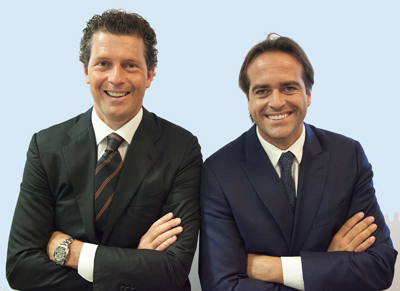 Dr. Alessandro Agnini graduated in 1989 from the University of Modena and Reggio Emilia, Italy. He has private dental practices in Modena and Sassuolo, Emilia Romagna, where he dedicates only to Fixed Prosthetic Dentistry, Periodontology and implant Dentistry. He attended the "Fixed Prosthetic" program of studies with Doctor Gianfranco Di Febo in the two years 1991 - 1993 and the Periodontology program of studies with Doctor Gianfranco Carnevale in the two years 1993 - 1995. In 1995 he attended the One Year Program in Implant Dentistry with Doctor Mauro Merli. Since 2006 he is an active member of the Italian Academy of Prosthetic Dentistry. He is an adjunct Professor at the University of Modena and Reggio Emilia, Italy, for the teaching of Fixed Prosthetic Dentistry and Implant Prosthetic Dentistry. He is author and co author of italian and international scientific publications and italian and international lecturer. He is the scientific director, since 2008, of the annual courses in Fixed Prosthetic Dentistry, Periodontology and Implant dentistry based at his own private office in Sassuolo. Since 2011 he is a lecturer of the Dental Xp Website, being also part of the Editorial Board. Author of the book "The Digital Revolution: the learning curve" edited by Quintessence
Dr. Alessandro Agnini graduated in 1989 from the University of Modena and Reggio Emilia, Italy. He has private dental practices in Modena and Sassuolo, Emilia Romagna, where he dedicates only to Fixed Prosthetic Dentistry, Periodontology and implant Dentistry. He attended the "Fixed Prosthetic" program of studies with Doctor Gianfranco Di Febo in the two years 1991 - 1993 and the Periodontology program of studies with Doctor Gianfranco Carnevale in the two years 1993 - 1995. In 1995 he attended the One Year Program in Implant Dentistry with Doctor Mauro Merli. Since 2006 he is an active member of the Italian Academy of Prosthetic Dentistry. He is an adjunct Professor at the University of Modena and Reggio Emilia, Italy, for the teaching of Fixed Prosthetic Dentistry and Implant Prosthetic Dentistry. He is author and co author of italian and international scientific publications and italian and international lecturer. He is the scientific director, since 2008, of the annual courses in Fixed Prosthetic Dentistry, Periodontology and Implant dentistry based at his own private office in Sassuolo. Since 2011 he is a lecturer of the Dental Xp Website, being also part of the Editorial Board. Author of the book "The Digital Revolution: the learning curve" edited by Quintessence
Dr. Andrea Mastrorosa Agnini graduated in 2007 from the University of Modena and Reggio Emilia. Dr Agnini works in private practice in Modena and Sassuolo, Emilia Romagna, Italy, following his brother, Alessandro, focusing on Fixed Prosthetic Dentistry, Periodontology, and Implant Dentistry. He attended the NYU College of Dentistry in the years 2009 - 2011 having, among others, as teachers and mentors Doctor Dennis Tarnow, Doctor Christian Stappert, Doctor Stephen Chu and Doctor Michael Bral. He has been the Clinical Research Fellow of the Ashman Department of Periodontology and Implant Dentistry at NYU, under the supervision of Dr Sang Choon Cho. He is co-author of various Italian and international scientific publications and international lecturer. He is part, since 2008, of the scientific committee of the annual programs in Prosthetic Dentistry, Periodontology and Implant Dentistry based at Studio Agnini Odontoiatria. Since 2011 he is a lecturer of the Dental Xp Website, being also part of the Editorial Board. Author of the book "Digital Dental Revolution: The Learning Curve" edited by Quintessence
Evolution in Managing Complex Prosthodontic Cases: From Analogue to Digital
In prosthetic rehabilitations, we used for many years codified and widely described protocols in literature, with results that met our expectations and well above those of our patients. It is true that the advent of new technologies has enabled the dental team to use new material and new equipment that facilitated the production of an adaptation and an accuracy of the prosthetic rehabilitation that has, up to now, been difficult to obtain. Today, intra-oral mapping technology is one of the most exciting new areas in dentistry since three dimensional scanning of the mouth is required in a large number of procedures such as prosthodontics, implant dentistry and orthodontics. All the existing intra-oral scanners are trying to face the limitations and the disadvantages of the traditional impression procedure maintaining an high accuracy level in order to be used as an efficacious alternative to the conventional impression technique. With this presentation, the authors analyze different cases, highlighting the operational differences that they have developed over time, with the increasing knowledge of the new materials and the daily developing of the new softwares. It is also described how traditional materials and techniques have been replaced with other innovative new technologies, and how the results obtained with these are systematic and overlapping times better than traditional one.
At the conclusion of this lecture participants will be able to or have gained an understanding of:
- Possibilities for accurate full arch intra oral digital scanning
- Overview on the latest updates on technologies and materials
- Key points for an accurate full digital workflow in complex cases
Elahe Behrooz, DDS, MBA, DDS, MSc (Prosthodontics), FRCD(C)
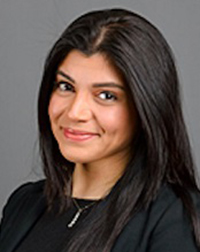
Dr. Elahe Behrooz obtained her first DDS degree in Iran and her Master of Business Administration (MBA) from the Eric Sprott School of Business, Carleton University. She obtained her second DDS degree from the University of Toronto (U of T) with honors and is a graduate of the Prosthodontic program at the U of T. She has been the recipient of numerous awards and has authored and co-authored multiple publications. She holds fellowship in the Royal College of Dentists of Canada (RCDC(C)) and memberships of multiple organizations including the Royal College of Dental Surgeons of Ontario (RCDSO), Ontario Dental Association (ODA), the American College of Prosthodontists (ACP), the American Prosthodontic Society (APS), and the OKU honorary dental society. Her passion for prosthodontics extends to provide dental and specialty services in remote underserviced areas.
Because Smiles Have No Borders?
Little is accomplished in the field of Prosthodontics in terms of outreach. This presentation focuses on an outreach program aiming to provide dental care in underserviced rural Uganda. It elaborates on personal and professional growth by participating in outreach endeavours and intends to identify barriers for provision of dental care and create replicable models to improve oral health globally. The impact of the APS foundation's support on this endeavour has been profound in the provision of financial aid to personnel who partake in outreach.
At the conclusion of this lecture participants will be able to or have gained an understanding of:
- Personal and Professional Growth by Volunteering and Participating in Outreach
- Logistics of a Dental Outreach Initiative
- Impact of Foundation Support on Global Dental Health
Dr. Marcelo Calamita, MS, PhD
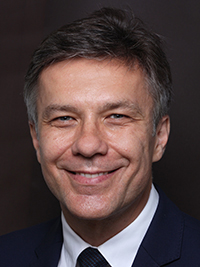
Marcelo Calamita graduated in 1988 from the University of Sao Paulo, where he also obtained his certificate, MS, and PhD in prosthodontics. He is Visiting professor in the Department of Restorative Dental Sciences at the University of Florida and worked as Associate Professor of Prosthodontics at University Braz Cubas and University of Guarulhos. Marcelo Calamita is the former president of the Brazilian Society of Esthetic Dentistry and the Brazilian Academy of Esthetic Dentistry. He was editor-in-chief of the Dental Press Brazilian Journal of Esthetics and currently serves on the editorial board of the International Journal of Periodontics and Restorative Dentistry and International Journal of Esthetic Dentistry, Brazilian editions. In addition, he has lectured nationally and internationally, written numerous scientific publications on treatment planning and esthetic dentistry. He also maintains a private practice in Sao Paulo focusing on comprehensive restorative, esthetic and prosthetic dentistry.
Analog Prosthodontic Principles in the Age of Digital Dentistry
High quality dentistry requires an approach that integrates scientific knowledge, clinical skills, technician's expertise, patient's preferences, and team communication. Excellence can become predictable and consistent with the establishment of a systematic approach, from the accurate diagnosis until the final equilibration. New hardware and software assist dentists and dental technicians to integrate the functional and biologic parameters into the esthetic project with a high degree of precision, once the techniques and limits are understood. Based on the scientific based/ clinical relevant binomial, it will be discussed the indications and advantages of the integration of traditional prosthodontic principles with modern digital tools, with the purpose of clarify the decision-making process and streamline the treatment sequence. Also, it will be reviewed the key elements of precision during tooth preparation, impressions, and occlusal equilibration in order to surpass the patient's expectations, provide efficient function and long-term stability.
At the conclusion of this lecture participants will be able to or have gained an understanding of:
- Introduce a systematic approach to confidently and consistently treatment plan cases with different degrees of complexity.
- Understand how to negotiate the conflicts between the ideal esthetic design versus the biological, structural and functional needs.
- Review the clinical procedures and the digital tools that critically influence the final outcomes.
Effrat (Effie) Habsha, BSc, DDS, Dip. Prostho., MSc, FRCDC
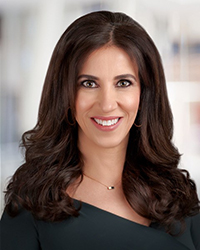
Dr. Effie Habsha received her Bachelor of Science degree and earned her DDS degree from the University of Toronto. Upon graduation, she completed a one-year General Practice Residency at Mount Sinai Hospital in Toronto, ON. Dr. Habsha received her Diploma in Prosthodontics and Master of Science degree, both from the University of Toronto. She is a Fellow of the Royal College of Dentists of Canada (RCDC) and is an examiner and Section Head for the Oral Examination in Prosthodontics for the RCDC. Dr. Habsha is an Adjunct Assistant Professor at the Department of Dentistry, Eastman Institute for Oral Health at the University of Rochester Medical Center. She has served as an Assistant Professor at the University of Toronto and currently instructs both at the undergraduate and graduate level in Prosthodontics at U of T. Dr. Habsha is a Professor at George Brown College of Applied Arts and Technology and is the On-staff Prosthodontist at MedCan clinic in Toronto. She holds an appointment as Staff Prosthodontist at Mount Sinai Hospital where she instructs the dental residents and is involved in various clinical research projects. Dr. Habsha is an Associate Fellow of the Academy of Prosthodontics and Greater New York Academy of Prosthodontics, a Fellow of The Pierre Fauchard Academy and holds memberships in numerous Prosthodontic organizations and societies. She lectures both nationally and internationally on various Prosthodontic topics and maintains a private practice limited to Prosthodontics and Implant Dentistry in Toronto.
Implant Surgery in the 4th Dimension: Passing Fad or Here to Stay?
Digital technology has had a dramatic impact on all disciplines of dentistry, particularly in the fields of Prosthodontics and Surgery. The evolution of digital technologies has provided dental professionals with the possibility of following a completely digital workflow beginning at diagnostic treatment planning to prosthesis fabrication. Incorporation of digital technologies in implant dentistry has improved patient outcomes as implant placement is prosthetically driven. There are tremendous benefits to the incorporation of digital technologies and workflows in the surgical realm. This presentation will provide practical and pragmatic overview of the digital tools and technologies used in the surgical aspect of implant care. The benefits of static and dynamic surgical guidance will be reviewed, with particular attention to dynamic guidance. Some of the challenges, limitations and inefficiencies encountered utilizing these technologies will be described.
At the conclusion of this lecture participants will be able to or have gained an understanding of:
- Demonstrate the utilization of digital technology in Implant Dentistry
- Review the accuracy, benefits and limitations of guided and dynamic implant surgery
- Show how all technologies can be used in the prosthodontic practice for the significant benefit of the patient
Dr. Nazariy Mykhaylyuk
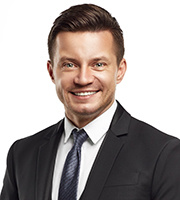
Nazariy Mykhaylyuk is a specialist in a field of microscopic dentistry (mostly indirect restorative dentistry). Works in Kyiv and Ivano-Frankivsk, Ukraine in family clinics in a team with his father and dental technician Bogdan Mykhaylyuk (M.Vision Lab - Oral Design Ukraine). Focused on digital dentistry. Clinical work 70%, lecturing 30%.
Analogue vs. Digital Dentistry
Throughout the years proper protocols were created by top world specialists. Then, microscopes and other magnification systems were introduced into a daily practice, and now it is difficult to imagine dentistry without them. Everything seemed completed. But no... Modern dentistry moves one. We are going digital.
Mr. Johnny Orfanidis
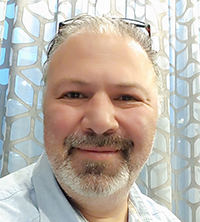
John Orfanidis is the Director of CAD/CAM and Design for Dynamic Dental Solutions in Jacksonville, FL. He is a third generation dental technician and has been around dental labs and clinical environments all his life. John has been at the forefront of advanced digital dental technology, having worked and consulted for companies such as 3M, Heraeus, Kulzer North America, and SensAble. Due to his extensive experience with various scanners, He has aided in development for scanning sequencing for DOF and Open Technologies. He has lectured internationally with Dr. Gerrard Kugel and Dr. Ron Perry on veneers , bonding, impression materials and processes. He was also instrumental in building the North American market for Exocad the leading dental design software. John has worked at TUFTS University as the CAD/CAM trainer in the post graduate prosthodontics dept and also held a research associate position which focused on digital technologies and materials. JohnnyO continues to push the limits for manufacturing in dentistry and for a better quality of life for patients.
Digital Denture -Digital Dentistry - The Final Frontier?
In the past few years we have seen an enormous interest and progress in digital systems and digital workflows. Acquiring the appropriate data for manufacturing is critical, however the patient is still the priority. Digital workflows are designed to enhance the patient experience by reducing errors as well as time in the chair. Digital workflows also increase the patients perception of expectations, thus a better quality of life. All digital systems incorporate every possible outcome for any type of prosthesis.. So are we done? Have we reached the end? I think NOT. We broke barriers of dentistry by incorporating additional features, such as including a nose or ear with the prosthesis. This synergistic approach can be repeated accurately without inconveniencing a traumatized patient from multiple visits and inaccuracy. While the final frontier is infinite, the path provides a better quality of life and oral health for our patients, while capturing synergism throughout the entire dental team; Doctor, Assistant, Hygienist, Periodontist, Restorative, Laboratory Technologist, and auxiliaries.
At the conclusion of this lecture participants will gain an understanding that there are no limits to digital dentistry.
Rade D. Paravina, DDS, MS, PHD
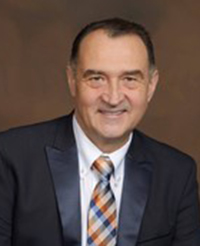
Rade D. Paravina is a tenured professor in the Department of Restorative Dentistry and Prosthodontics, University of Texas School of Dentistry at Houston. Dr. Paravina has authored/co-edited three books, 15 book chapters, 250+ peer-reviewed publications (papers and abstracts), and has designed/developed several dental products and tests. His work has been cited 1800+ times on Scopus and 4000+ times on Google Scholar. Dr. Paravina is founder and past president of the Society for Color and Appearance in Dentistry (SCAD). He is a recipient of the 2011 E. B. Clark Award, the SCAD Award for Lifetime Achievement, and the 2014 Jerome M. and Dorothy Schweitzer Research Award of the Greater New York Academy of Prosthodontics. He is Director in the Executive Council of the American Academy of Esthetic Dentistry (AAED), and fellow of AAED, SCAD and AADR. He serves as associate editor of the Journal of Esthetic and Restorative Dentistry and editorial board member for the Journal of Dentistry, Journal of Prosthetic Dentistry, International Journal of Prosthodontics, and the American Journal of Dentistry.
Color and Appearance from Analogue to Digital- Myths and Facts
Color and appearance are very pertinent to dental practice given their importance for the esthetic outcome and the fact that the vast majority of dental restorations are tooth colored. This lecture will provide an overview of the most recent scientific developments combined with their clinical application. Examples and practical suggestions associated with enhanced esthetic outcome in both the dental office and the dental laboratory will be provided. This includes but is not limited to the nature of color, evidence-based interpretation of clinical outcomes, materials selection and quality control, computer modelling for "white", "pink", and relevance of translucency. Examples of the "analogue/digital" approach, aimed to address some of the drawbacks and provoke paradigm shift, will be provided.
At the conclusion of this lecture participants will be able to or have gained an understanding of:
- Understand the nature of color appearance and visual threshold in dentistry through the "analogue/digital" point of view
- Review and contrast traditional (empirical) and contemporary (evidence-based) approach to tooth color matching, communication and reproduction/li>
- Compare the "pink" related issues and solutions
- Provide a take-home information on synergy between color and translucency
Stavros Pelekanos, DDS, Dr med dent
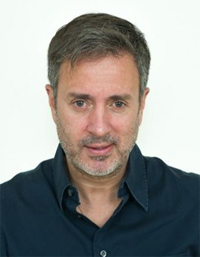
Dr. Stavros Pelekanos received his undergraduate degree in Dentistry (D.D.S.) in 1991 from the University of Athens, Greece. In 1993, he obtained his doctoral degree in Prosthodontics (Dr med dent) from the University of Freiburg (Prof. Dr. J.R. Strub), Germany. Following his professional training, Dr. Pelekanos established a private practice in Athens, oriented towards prosthodontics, implantology and esthetic dentistry. In 2002, he was appointed full-time Lecturer at the Department of Prosthodontics, Dental School, University of Athens, Greece, and in 2012 Assistant Professor in the same department. Since 2013, he is an active member of the European Academy of Esthetic Dentistry (EAED). He is a faculty member of gIDE Institute and Dental Tribune, lecturing internationally and performing hands on courses on implants, aesthetics and restorative procedures. In 2008 and 2011, Dr. Pelekanos received 2nd and 1st prize at the scientific award competition of the European Academy of Esthetic Dentistry held in Madrid and Istanbul respectively. To date he has published over twenty articles in peer reviewed journals and 3 chapters in books.
The Synergy of Digital Dentistry and Biology in Implantology. Designing and Treatment Workflow.
With dentistry becoming more computer controlled, dental profession has experienced an exciting amount of technological growth during the last years. Implant placement through digitally designed guide stents becomes more and more popular as the accuracy, the efficacy and handling of these procedure is evolving fast. On the other hand, CAD CAM prosthetic implant restorations are already implemented since many years in the everyday lab using well-developed lab scanners and software's. The last missing link, the use of intraoral scanners seems to gain more and more the trust of the practitioners in the daily practice. The aim of the presentation is to analyze thought scientific evidence and daily experience different abutment designs as well as the indications and limitations of the digital process depending on existing materials and known procedures. Emergence profile, chairside intraoral scanning, handling digital impressions, usual mistakes and the full process from digitization to manufacture and final cementation through all the design steps will be clarified. Clinical cases will be presented discussing different clinical approaches, showing the synergy of older and newer biological concepts in the treatment workflow.
At the conclusion of this lecture participants will be able to or have gained an understanding of:
- Different Abutment Designs
- The Limits of the Digital Workflow in the Clinical Practice and Lab
- Step by Step of Helpful Clinical Procedures
Alessandro Pozzi, DDS
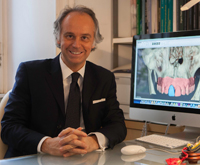
Alessandro Pozzi, DDS, has been in practice in Rome, Italy since 1997, and formally trained in the inter-related areas of Orthodontics, Oral surgery and Prosthodontics. Currently, he has been entitled by the Ministry of Education and Research as Full Professor in Oral Sciences in Italy and he is Adjunct Associate Professor at the Goldstein Center for Esthetics and Implant Dentistry of Augusta University, USA. Researcher and scientist, widely published, he has been carrying on clinical researches on the cutting edges technologies to integrate the digital workflow in implant dentistry. As a researcher, he received the 2013 Judson C. Hickey Scientific Writing Award in the Clinical Report Category. Guest Lecturer in the Continuing Education in Implant Dentistry at the UCLA University, Los Angeles. Co-Author with PK Moy and John Beumer of the textbook Fundamental of Implant Dentistry, Quintessence Publisher. Active member of the Academy of Osseointegration and of the Italian Academy of Esthetic Dentistry. Member of the Editorial Board of the Clinical Implant dentistry and Related Research Journal and of the International Journal Oral Implantology. He has been lecturing in the most prestigious congresses and academies since 2010. He holds international training courses on digital implant dentistry and aesthetics in his center for Oral Rehabilitation based in Rome Italy. www.studioalessandropozzi.com
Orchestration of Static Guided Surgery, Dynamic Navigation and Guided Prosthesis. A Novel Minimal Invasive Treatment for Edentulous and Terminal Dentition Patients.
The computer guided implant surgery and the Navigation system introduced a novel minimally invasive concept in the treatment of total edentulous and terminal dentition patients, with new perspectives based on bone graftless rehabilitation, complication-free implant surgery and immediate function. The novel digital implant planning software allow the creation of the virtual patient directly from the CBCT, enhancing a digital pathway based on facially driven virtual diagnostic waxing, prosthetically and soft tissue driven implant positioning and immediate fabrication of implant-supported screw-retained interim restorations. The new DASS technique to sculpture the bone and soft tissue and achieve a scalloped interface for pink free restoration will be presented. The interplay between the guided surgery planning software and the Navigation System drives the virtual planning and the minimal invasive implant and prostheses positioning to the next level in terms of accuracy, predictability and low morbidity.
At the conclusion of this lecture participants will be able to or have gained an understanding of:
- Understanding the benefits and disadvantages of using digitally guided surgery and prosthetics techniques
- Gain knowledge on the different clinical indications of CAD/CAM template guided implant surgery and x-guide navigation implant surgery
- Feel confidence and being able to differentiate when immediate loading is feasible
- Managing the soft tissue interface for pink free full arch restorations
Miguel Stanley, DDS
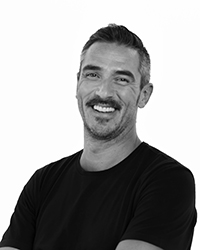
Dr Miguel Stanley is a dental surgeon with a passion for complex oral rehabilitation, who has a team of highly specialized dentists that focus on everything from basic family dentistry to full mouth complex oral cosmetic rehabilitation. A trained implant surgeon and cosmetic dentist that graduated in 1998, Dr Stanley has become a recognized opinion leader in the field of both cosmetic dentistry and complex implant surgery. Being the first Portuguese dental XP expert since 2009, for the past 16 years he has been lecturing around the world, sharing his passion for this field. In recent years Dr Stanley has transitioned his practice and his team into the digital era. Today he has a team entirely dedicated to the complete digital workflow in dentistry. He created the No Half Smiles philosophy and the Slow Dentistry concept. He's passionate about ethics and quality in dentistry. Dr Miguel loves to share his vision with the younger future generations of dentists. His license to practice in Portugal, UK and Dubai. Dr Stanley is also the first dentist to host the first ever documentary on National Geographic on dentistry.
Analog to Digital in Implant and Restorative Dentistry
New technologies are reshaping the way we practice dentistry nowadays. New materials, new designs, computer software and much more are helping us push the boundaries of what we thought "possible" in implant and restorative dentistry. How 3D guided surgery improved the surgical time and outcome; how new regeneration materials are revolutionizing hound healing and soft tissue management; how immediate loading can be a simple procedure but most of all, how to use the best materials and technology to improve your surgical and restorative skills. From the old-school approach to the latest technologies Doctor Stanley and his interdisciplinary team have been working together as a tight unit on solving complex full-mouth cases. By presenting some selected clinical cases, Dr Stanley will walk you through White Clinic's evolution of digital dentistry, how to introduce it in your day-to-day workflow and how it helps save time and stress.
At the conclusion of this lecture participants will be able to or have gained an understanding of:
- How can digital dentistry change the way I work? Does it make things easier and faster?
- How do I transit from analog dentistry to digital dentistry?
- How working with the cloud and interdisciplinary teams around the globe can make you improve your practice
Enrico Steger, MDT
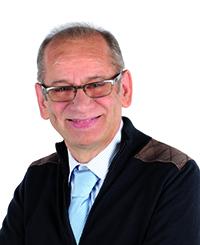
Enrico Steger, MDT is the founder and owner of Zirkonzahn, an international firm located in Italian Alps and strongly related to its homeland values of trust, responsibility, discipline and perseverance. Well-known in the dental sector for the invention of several innovative dental solutions, including the Prettau® Bridge.
The Evolution in Managing Complex Prosthodontic Cases from Analogue to Digital
Zirkonzahn founder - Enrico Steger MDT - illuminates cutting-edge digital workflows strengthening interdisciplinary collaboration within the treatment team for more predictable and customized patient care outcomes. Highlighting the advent of CAD/CAM as a catalyst for the transformation of traditional craftsmanship, Steger emphasizes the crucial role of continued education to harness the power of a complete digital workflow inside the dental practice. Providing innovative working methods from implant planning to 3D virtual patient diagnostics, the visionary will analyze clinical cases and discuss the myriad digital treatment solutions that differentiate the modern in-office laboratory.
At the conclusion of this lecture participants will be able to or have gained an understanding of:
- Dynamic Patient Analysis with Digital Facebow
- Digital Planning for Immediate Provisionalization
- Myriad Application of Final Materials in Complex Prosthodontics
Epameinondas Vlachopoulos, MDT
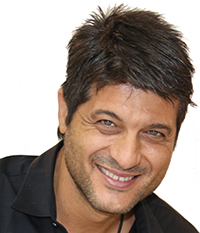
Nondas Vlachopoulos was born in Toronto, Canada. He graduated from the school of dental technology in 1985. He then acquired a BSc Hons from the School of Dental Technology of the Technological Educational Institution of Athens (1989). In 1990, he established his own dental laboratory "AestheticLab" in Athens. Since 2001, he has been Opinion Leader for Noritake Dental and MPF Brush Co. in Greece. Since May 2014 he is an editorial reviewer at the AACD's Journal of Cosmetic Dentistry (jCD). He specializes in aesthetic all-ceramic and implant restorations. His laboratory collaborates with the Dental School of the National and Kapodistrian University of Athens, Greece and its postgraduate programs of Dental Prosthodontics and Dental Surgery, as well as with the Department of Prosthodontics of the Eastman Institute of Oral Health of the University of Rochester and Chicago, USA. Since September 2015, he is cooperating to the practical education of the Postgraduate program leading to a Master of Science Degree in dental Biomaterials/Materials of Dental Technology. The program is operated by The Department of Dental Technology of the Technological Institution of Athens in conjunction with the Dental School of the National & Kapodistrian University of Athens. Nondas Vlachopoulos is leading many educational hands-on courses in Greece and worldwide (USA, South America, Europe, Asia and Middle East). He is invited to lecture on dental aesthetics at international meetings and congresses. He has published articles in Greek and international Dental Technology journals.
Perfecting Anterior All-Ceramic Full-Coverage Restorations: A Step-by-Step Analog and Digital Approach
Today's aesthetic dentistry invests in a broad range of knowledge coming from many sciences and arts. The great contribution of modern technology in the field of materials and machinery, combined with today's most advanced manufacturing techniques is the key to satisfy the aesthetic and functional demands of patients. The need for optimum results in the areas of aesthetics, function and biocompatibility, necessitates more and more the use of all-ceramic restorations, implants, and their combination. However knowledge, talent, technique, artistic ability and perception of the dental technician remain the biggest and perhaps the most important factor to create impeccable work. The dental technician must have the ability to assess every single time all the factors, in order to select a suitable patient therapy, and also to modify his technique wherever it is necessary for the design and execution, so that the best result can be obtained. In this presentation we will described step by step the daily laboratory process, and the way that art and technology in combination with artistic ability, manage to fulfill with great success excellent accuracy for the requirements of each individual case. Methods and handling for analysis and design will be described in order to understand and be able to select the proper solution for the optimal result.
At the conclusion of this lecture participants will be able to or have gained an understanding of:
- Digital framework design and its importance to the increase of the Zirconia restorations' strength & aesthetics
- Internal stain techniques and fluorescent increase on Zirconia restorations
- Step by step layering on Zirconia and Feldspathic Veneers with the "One Bake Technique"
Aki Yoshida, RDT
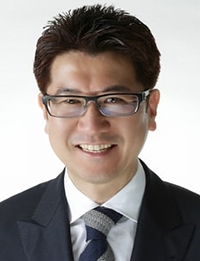
Aki is the owner-operator of Gnathos Dental Studio in Weston, Massachusetts USA. The laboratory, originally founded by Dr. Lloyd L. Miller, is an innovative, quality driven dental lab consistently producing the highest level of dental restorations. He is a Fellow member of the AAED and SCAD. He is also an instructor for Kuraray Noritake Dental Supply.
Color and Appearance from Analogue to Digital- Myths and Facts
Color and appearance are very pertinent to dental practice given their importance for the esthetic outcome and the fact that the vast majority of dental restorations are tooth colored. This lecture will provide an overview of the most recent scientific developments combined with their clinical application. Examples and practical suggestions associated with enhanced esthetic outcome in both the dental office and the dental laboratory will be provided. This includes but is not limited to the nature of color, evidence-based interpretation of clinical outcomes, materials selection and quality control, computer modelling for "white", "pink", and relevance of translucency. Examples of the "analogue/digital" approach, aimed to address some of the drawbacks and provoke paradigm shift, will be provided.
At the conclusion of this lecture participants will be able to or have gained an understanding of:
- Understand the nature of color appearance and visual threshold in dentistry through the "analogue/digital" point of view
- Review and contrast traditional (empirical) and contemporary (evidence-based) approach to tooth color matching, communication and reproduction
- Compare the "pink" related issues and solutions
- Provide a take-home information on synergy between color and translucency
